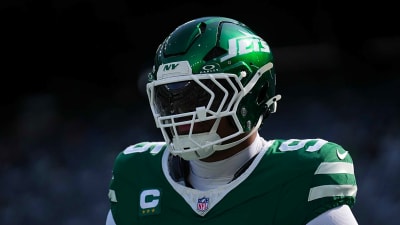
Juan Soto's bat speed decline threatens Mets' $765 million investment
Juan Soto's bat has slowed by 2.4 mph this season, and that seemingly small number is threatening to turn the Mets' $765 million investment into baseball's most expensive disappointment.
Through Sunday's games, the former Yankees slugger who terrorized fastballs en route to the World Series last October now appears completely lost against the same pitches that once made him elite.
The numbers tell a stark story. Soto is slashing a pedestrian .248/.374/.396 with three home runs and a .770 OPS. His OPS+ sits at 122 — above league average (100) but nowhere near the MVP-caliber 178 OPS+ he posted with the Yankees last season when he slashed .288/.419/.569.
When the Mets signed Soto to his 15-year megadeal, they expected production mirroring his 2024 Yankees campaign that earned him third place in AL MVP voting. Instead, they've received a shadow of that player, and the culprit appears clear: his diminished bat speed is hampering his ability to handle fastballs.
For casual fans wondering why bat speed matters so much, think of it this way: those extra milliseconds make the difference between catching up to a 95 mph fastball or fouling it off, between driving the ball with authority or making weak contact. It's the difference between the Soto who changed games with one swing and the current version struggling to impact outcomes.
The decline in bat speed (from 75.4 mph in 2024 to 73.0 mph this season per Baseball Savant) has cascaded through his performance metrics. Year-over-year, his hard-hit rate has tumbled from 57 percent to 50 percent, while his barrel percentage has nosedived from an elite 19.7 percent to a pedestrian six percent.
In baseball's data-driven era, these aren't just numbers but warning flares.
Most revealing is Soto's performance against fastballs, previously his bread and butter. Last season, he demolished heaters to the tune of a .333 average with 31 home runs and a .709 slugging percentage.
Yankees fans still remember his ALCS-clinching blast off a 95.2 mph four-seamer that left his bat at 109.7 mph and traveled a projected 402 feet.
This season? He's managed a single homer against fastballs with a paltry .396 slugging percentage through 60 plate appearances. For context, Soto hadn't slugged below .576 (2022) against fastballs in any season, full or partial, since his career began in 2018.
His launch angle profile tells a similar story. Last season, Soto was in the 65th percentile for launch angle sweet spot percentage. This year, he's plummeted to the third percentile. He's simply not squaring up balls at optimal angles of 8-32 degrees, particularly on the fastballs he once punished.
"Players go through ups and downs," Soto told MLB.com's Mark Feinsand recently. "It will never always go great. Through the year, it's a long season and it's a lot of at-bats. There are ups and downs, but whenever you click in and find your spot, that's when everything starts."
While April has historically been Soto's worst month (.853 career OPS), his current struggles represent a different magnitude altogether. The $765 million question looms: Is this a temporary mechanical issue, or has something fundamentally changed in Soto's swing?
As April gives way to May, the Mets find themselves in an unexpected predicament. They didn't pay generational money for an average power hitter. They paid for the electrifying slugger who could alter a game's outcome with one majestic swing.
That swing is currently missing 2.4 mph of bat speed. At baseball's highest level, this seemingly small difference makes all the difference between greatness and mediocrity.
More must-reads:
- Comparing the Yankees and Mets after Juan Soto's move
- Mets' Steve Cohen addresses Pete Alonso's future, Juan Soto's rough start
- The 'MLB home run leaders from 2024' quiz
Breaking News
Trending News
Customize Your Newsletter
 +
+
Get the latest news and rumors, customized to your favorite sports and teams. Emailed daily. Always free!








